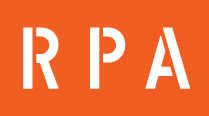Glossary
Glossary

Search:
(clear)
p
- Passive House“Passive House” is today’s most energy efficient building standard. Buildings that meet the Passive House standard use 80% less energy for heating and cooling than conventional buildings yet are markedly more comfortable and healthy than traditional buildings. A Passive House conserves(...)
- Passive SolarUtilizing solar in passive manner such as with thermal masses or solar light tubes instead of actively with photovoltaic panels or solar hot water systems. Source: Energy Audit Blog
- Passivhaus StandardA residential building construction standard requiring very low levels of air leakage, very high levels of insulation, and windows with a very low U-factor. Developed in the early 1990s by Bo Adamson and Wolfgang Feist, the standard is now promoted by the Passivhaus Institut in Darmstadt,(...)
- PHI (Passivhaus Institut)The Passive House Institute (PHI) is an independent research institute lead by Dr Wolfgang Feist with a continuously growing interdisciplinary team of employees. PHI has played an especially crucial role in the development of the Passive House concept. The first pilot project (Kranichstein(...)
- PHIUS+PHIUS+ rater. An individual who has successfully completed the training and exam administered by PHIUS to verify that PHIUS precertified Passive House projects are constructed as design.. PHIUS+ raters perform onsite testing and inspection during multiple site visits to ensure QA/QC.
- PHIUS Certified Passive HouseA PHIUS certified Passive House is a building certified by the Passive House Institute US (PHIUS) to meet the PHIUS + building standard. The PHIUS + building standard is a global building energy standard designed to create comfortable, healthy, and energy efficient buildings.
- PHIUS Certified Passive House ConsultantA PHIUS CPHC (Certified Passive House Consultant) is a professional in the building industry trained by PHIUS to apply the rigorous Passive House approach to creating comfortable, healthy, and energy efficient buildings. The training is focused on the principles of passive building design and(...)
- PHIUS (Passive House Institute of the US)Passive House Institute US (PHIUS) is a 501(c)3 organization committed to making high-performance passive building principles the mainstream best building practice, and the mainstream market energy performance standard. PHIUS has trained more than 1,700 architects, engineers, energy(...)
- PlateSill plate: or “mud sill”: a horizontal member anchored to a masonry wall. Sole plate: bottom horizontal member of a frame wall. Top plate: top horizontal member of a frame wall supporting ceiling joists, rafters, or other members.
- PlywoodA wood product made of three or more layers of veneer joined with glue, and usually laid with the grain of adjoining plies at right angles.
- Prefab1. A building, manufactured in standardized parts or sections ready for quick assembly and erection. 2. A structure fabricated at an offsite location and brought to the site as fully assembled for installation. 3. A broad term that encompasses several different types of building.(...)
- Pressure BoundaryThe primary air enclosure boundary separating conditioned air and unconditioned air. Typically defined by the air control layer system. Source: BSD-104: Understanding Air Barriers; Info-401: Air Barriers—Airtight Drywall Approach
- Primary EnergyPrimary energy is the raw fuel that is burned to create heat and electricity, such as natural gas or fuel oil used in onsite generation. When primary energy is consumed on site, the conversion to source energy must account for losses that are incurred in the storage, transport, and delivery(...)
- PVPhotovoltaics (PV) is a method of generating electrical power by converting solar radiation into direct current electricity using semiconductors that exhibit the photovoltaic effect. Photovoltaic power generation employs solar panels composed of a number of solar cells containing a(...)

